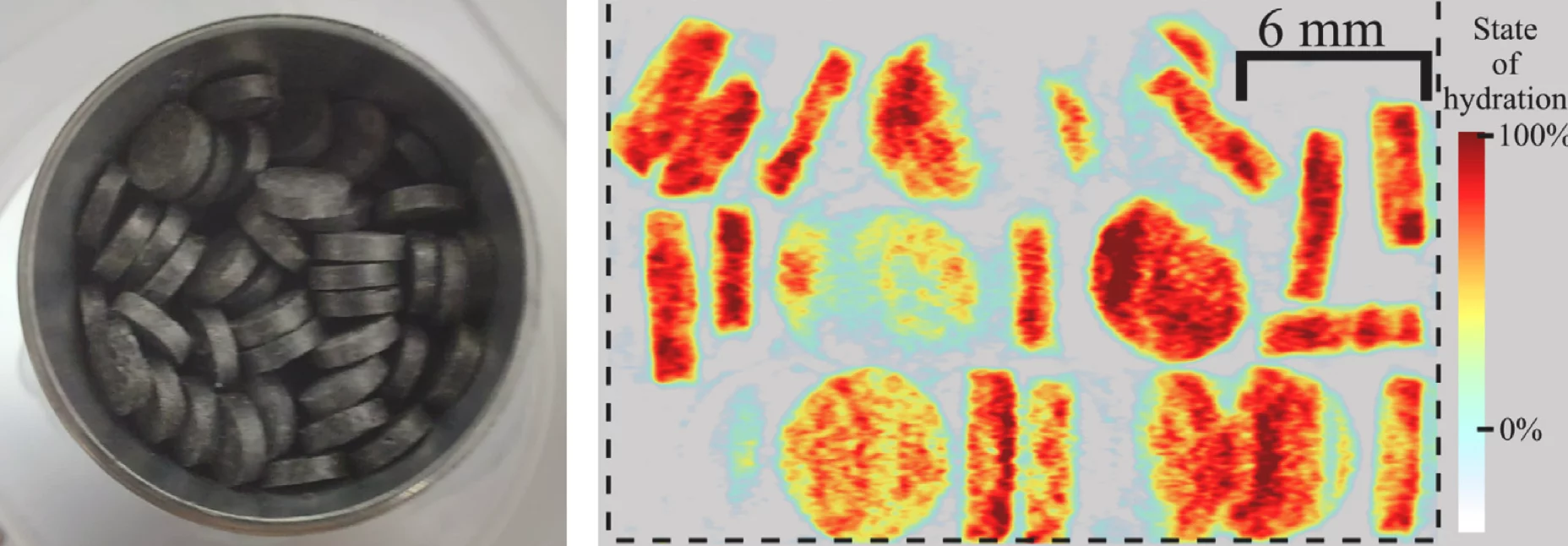To study the heat and water vapor transport and reaction kinetics in a packed bed of thermo-chemical material on both reactor and tablet level, an in-situ neutron imaging study of a dehydrating and subsequently hydrating packed bed consisting of cylindrical K2 CO3 tablets was performed at the Paul Scherrer Institute. Comparing an unstructured packing with high porosity and a structured packing with low porosity, significantly slower dehydration was observed for the latter, and it is theorized that this is due to enhanced heat loss to the non-insulated reactor wall as a result of increased tablet-tablet and tablet-wall contact surface area.
CFD was used to investigate the interaction between flow and hydration. From the axial flow distribution, it was derived that a high degree of wall channeling is present. Focusing on individual tablets, it was shown that the hydration process depends not only on the axial distance of the tablets to the inlet but also on local variations in bed morphology. Tablets surrounded by a homogeneously distributed velocity field hydrate from the surface towards the center with an axisymmetric front. This symmetry is not observed in tablets near regions of high velocity magnitudes, where tablet material exposed to high velocity air may hydrate faster. The bed was able to expand freely in one direction, and it was established that the relation between bed height and bulk bed hydration is non-linear, as the bed height relatively increases faster than the bulk neutron attenuation. Finally, it was found that the porosity of the bed does not significantly change during hydration.
Facility: SINQ
Reference: R.D. D'Rose et al, Journal of Energy Storage 136, 118255 (2025)
Read full article: here



